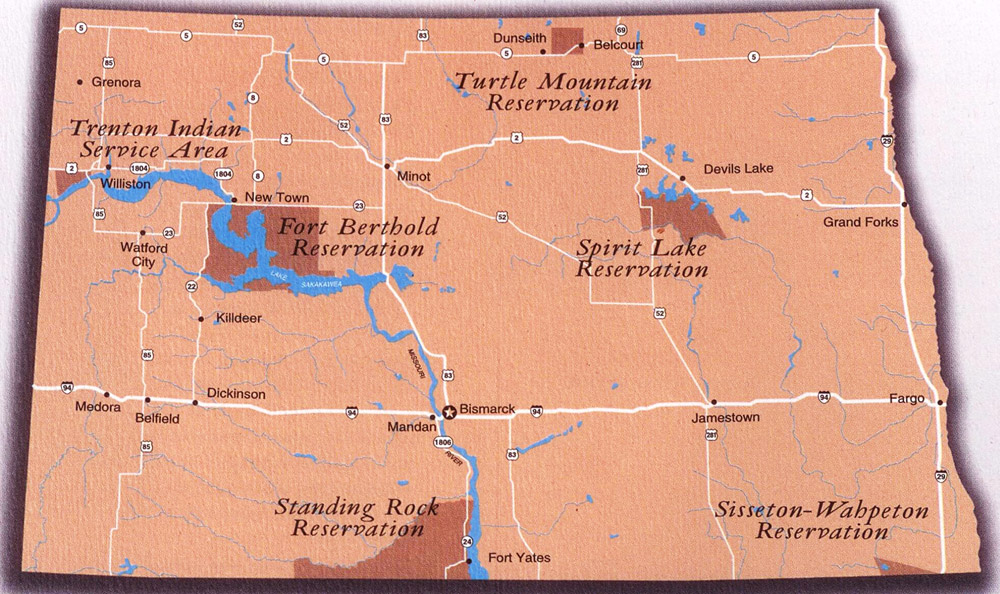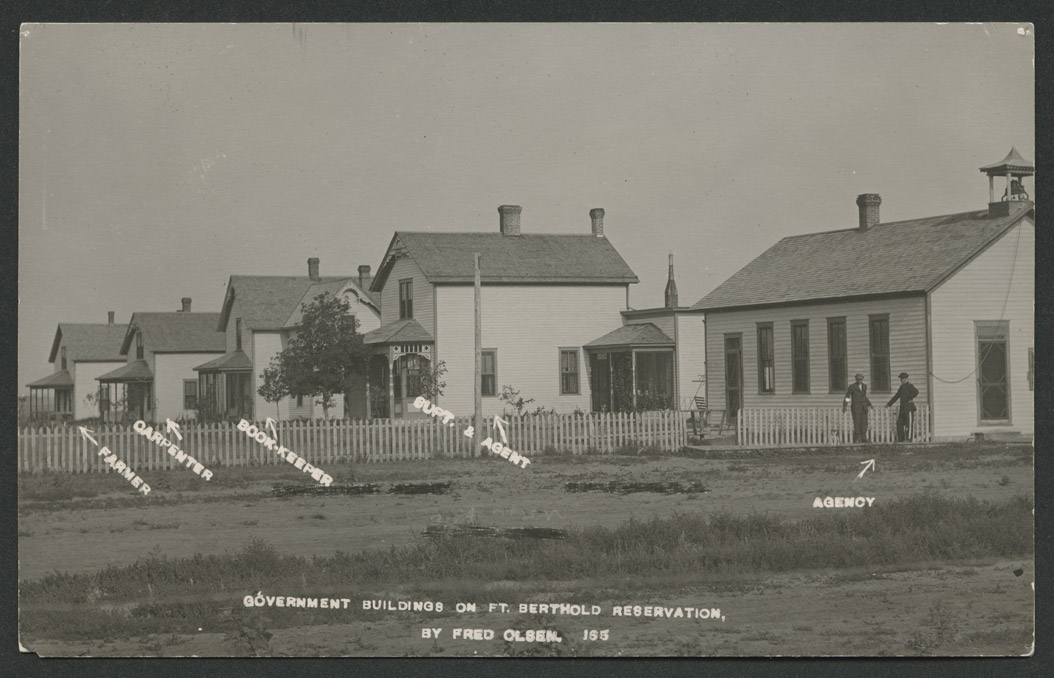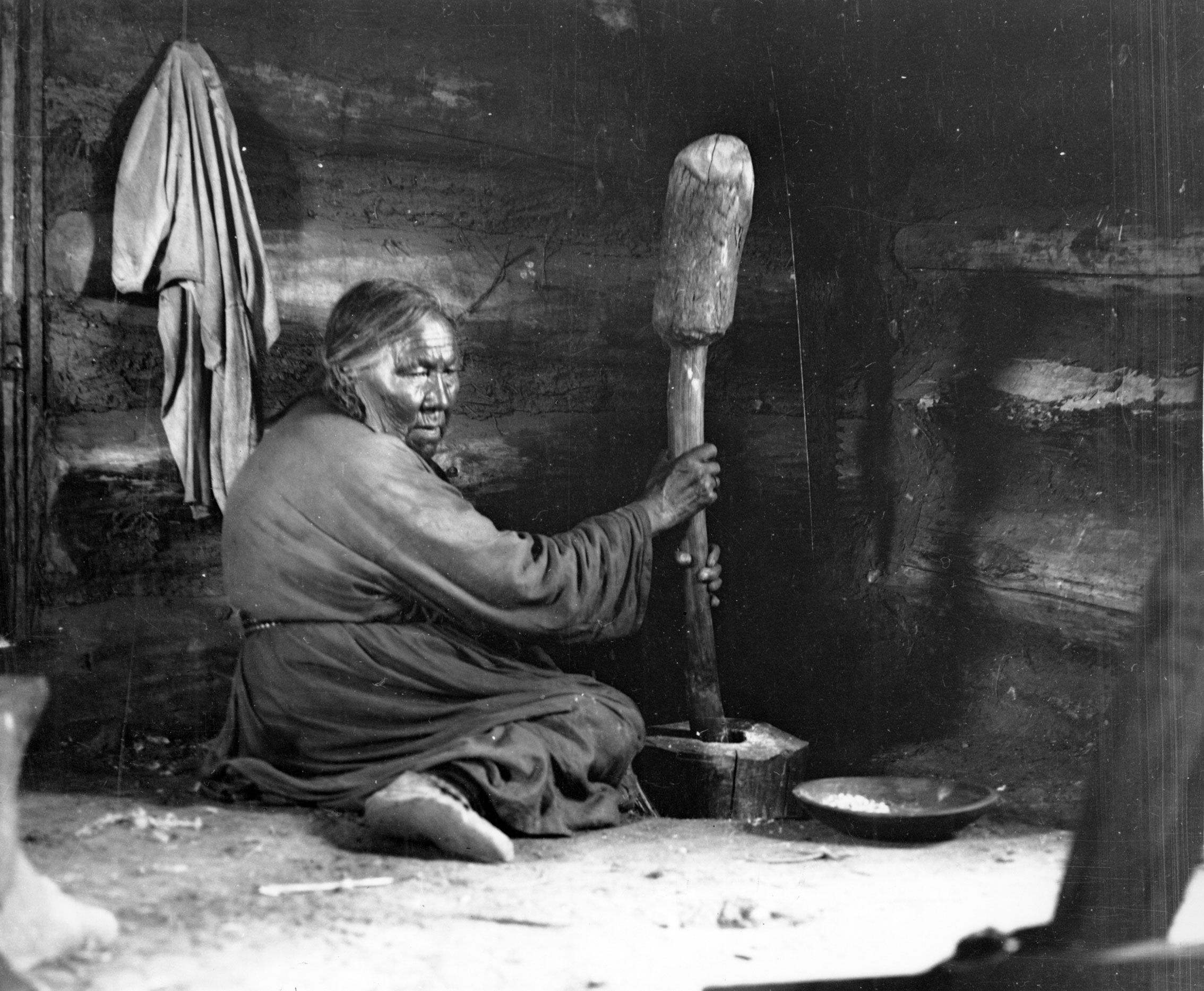By 1882, most of the American Indians of the northern Great Plains resided on reservations established by the federal government. Five reservations were established partially or wholly in northern Dakota Territory. They were (and still are) Standing Rock Reservation (Lakota and Yanktonai), Fort Berthold Reservation (Mandan, Hidatsa, and Arikara), Turtle Mountain Reservation (Chippewa), Fort Totten Reservation (Dakota; now called Spirit Lake Reservation), Sisseton-Wahpeton Reservation (Dakota). (See Map 1)

Before 1860, each of these tribes had pursued ways of making a living (economies) based on the resources available to them. The sedentary tribes raised crops, hunted, and traded. The nomadic tribes hunted and traded. They worked appropriately for the season which means that they did most of their hunting in the late summer and early Fall. They raised crops in the spring and summer. Other means of making a living such as making and decorating clothing, extracting Knife River flint, or trading took place when time allowed.
When the tribes were forced to accept a reservation,Reservation histories differ for each tribe. The first reservation to be established in North Dakota was the Fort Totten Reservation in 1867. Several bands of Dakotas signed a treaty making the reservation their home.
The Lake Traverse Treaty of 1867 created a reservation for the Sisseton and Wahpeton bands of Dakotas. Only a small portion of the reservation is located within the boundaries of North Dakota.
Standing Rock reservation is the home of several bands of western Dakotas (now called Lakotas) and some middle Dakota bands. It is a large reservation with most of its land in South Dakota. Tribal headquarters, however, is at Fort Yates in North Dakota. Standing Rock was part of the Great Sioux Reservation established by the Fort Laramie Treaty of 1868. In the 1870s, the reservation was reduced in size.
The Fort Berthold Reservation, now the home of the Three Affiliated Tribes of Mandans, Hidatsas, and Arikaras, was established in 1870. In 1880, this reservation was greatly reduced in size to accommodate the land grant area of the Northern Pacific Railroad.
The federal government established a reservation for the Chippewas of Dakota Territory in 1882. The reservation was reduced in size in 1884. The remaining land base of two townships was too small for the population. Many people had to leave the reservation. they lost some of their economic activities such as hunting bison and gathering native plants. The loss of these economies was very harmful to the tribes. The move to reservations resulted in poverty, illness, and a declining tribal population.
There were, however, new resources available to tribes through trade and through their federal annuities.Annuities refers to the annual payments, usually in goods, that Indian tribes received in exchange for the land they ceded (gave up) to the federal government. Annuities usually included food, clothing, farm equipment, guns for hunting, knives, kettles, and household goods such as cloth, thread, and needles. The annuities were usually distributed for several years as required by the treaty. The date of distribution was announced and the people would gather at the agency storehouse to await the goods the government owed them. Metal goods were welcomed. Stoves heated their houses and cooked their food. Women found the metal kettles to be efficient in cooking.


The federal government assigned agents to each reservation. (See Image 1) Missionaries often established churches and schools on the reservations. Both agents and missionaries taught the Dakotas, Lakotas, Chippewas, Mandans, Hidatsas, and Arikaras new skills that would help them adjust to life on the reservation. Sometimes these skills, such as farming or blacksmithing, helped to provide food, clothing, or housing for the tribes. Some skills generated income through sales to non-Indian visitors and tourists. Indians did the work necessary to help their families survive, but many found it difficult to learn new ways and to give up traditions that had given them a comfortable life for thousands of years. (See Image 2)


